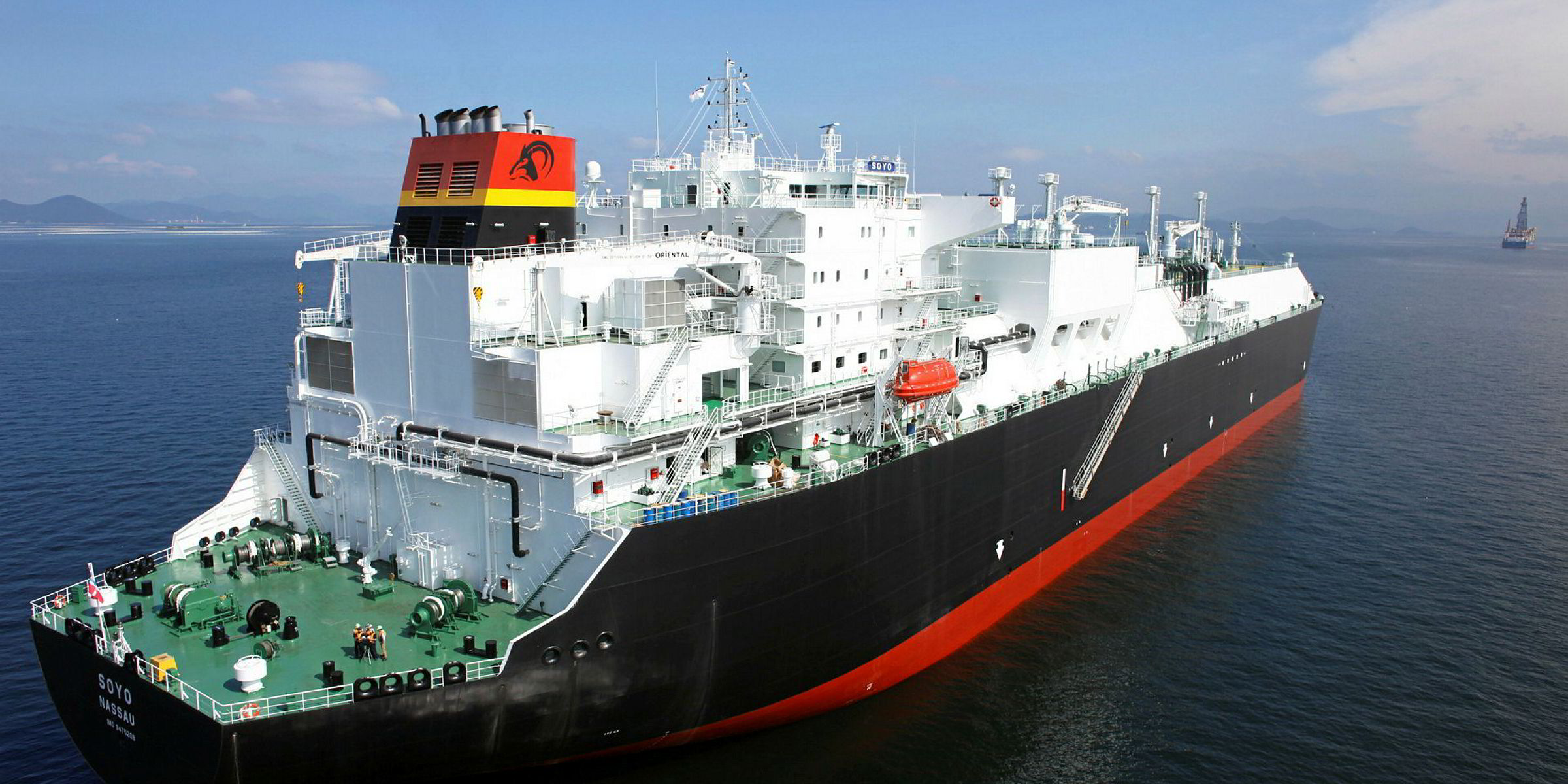LNG carrier chartering and enquiry activity is up in what is traditionally a quieter time of the year.
Brokers report that the pool of available modern LNG tonnage has been reduced across all three key trading basins, with virtually no spot ships available in the Atlantic, and fewer than five open cold in both the Pacific and Middle East.
They comment that daily charter rates for modern, tri-fuel diesel-electric vessels are firmly in the range of $40,000 per day, with charterers now paying more towards ballast bonuses — a change from earlier this year when these were non-existent.
Cargo tenders from Argentina’s Enarsa and Nigeria LNG have also heightened activity in chartering circles, with six key enquiries logged last week.
Charterers are also said to be enquiring about taking ships on period hire, although some brokers suggest this may simply be a rate check exercise.
“The market seems to be changing,” one LNG shipowner told TradeWinds, explaining that sentiment among owners has improved.
US exporter Cheniere Energy is identified as one of the most active companies in chartering circles, described by one broker as “hoovering up” tonnage.
The LNG producer is not only shipping its own cargoes from its Sabine Pass LNG facility in the US, but is also making a play in the trading arena, lifting product out of Nigeria and the Middle East.
More LNG has come onto the market in recent months and the second half of this year will see further fresh volumes added.
Independent consultant Andy Flower calculates that LNG supply is up 10.7% or 13.8 million tonnes in the first half of this year. Of this total, 6.4 million tonnes has come onstream from Australian projects, 5.5 million tonnes from the US, with Egypt and Angola adding to the mix.
In the US, Cheniere is currently limbering up to export its first cargo from the company’s newly started fourth liquefaction train at Sabine, and Dominion Energy has said it will begin commercial service at Cove Point later this year.
In Australia, Chevron is due to export the first cargo from its 15 million tonnes per annum Wheatstone LNG plant. Sources say the shipment is scheduled to load on 3 September and head to Japan.
Chevron-led Gorgon LNG has finally ramped up its production with the major declaring that the $60bn, three-train project is running at full capacity. While Origin Energy’s Australia Pacific LNG has certified that all of its six liquefaction trains are now operational.
The first cargoes from Russia’s Yamal LNG plant are also expected to make an appearance before the end of this year.
LNG shipping is largely in place for this new incoming supply. But these fresh volumes come with a new dynamic: the US cargoes have destination flexibility and there are a greater number of importers in the market, which in turn is generating new cargo trades.
The supply and demand equation is further complicated by upcoming newbuilding deliveries.
Shipbroker Clarksons lists 30 LNG carriers due for delivery before the end of this year.
While some handover dates are likely to slide into 2018 and yards are expected to be accommodating to shipowners, observers say there will be a mis-match between some vessels and project start-ups that could add to any tonnage overhang. However, this could be balanced by the tendency for LNG chartering activity to increase towards the year-end.
Few LNG market players appear to be forecasting a dramatic uptick in LNG carrier rates for the latter part of 2017.
But several commentators are now indicating that there is upward momentum on levels and that a gradual improvement — likely punctuated by more static periods — is expected through the rest of this year and into 2018 as the sector swings more into balance.




